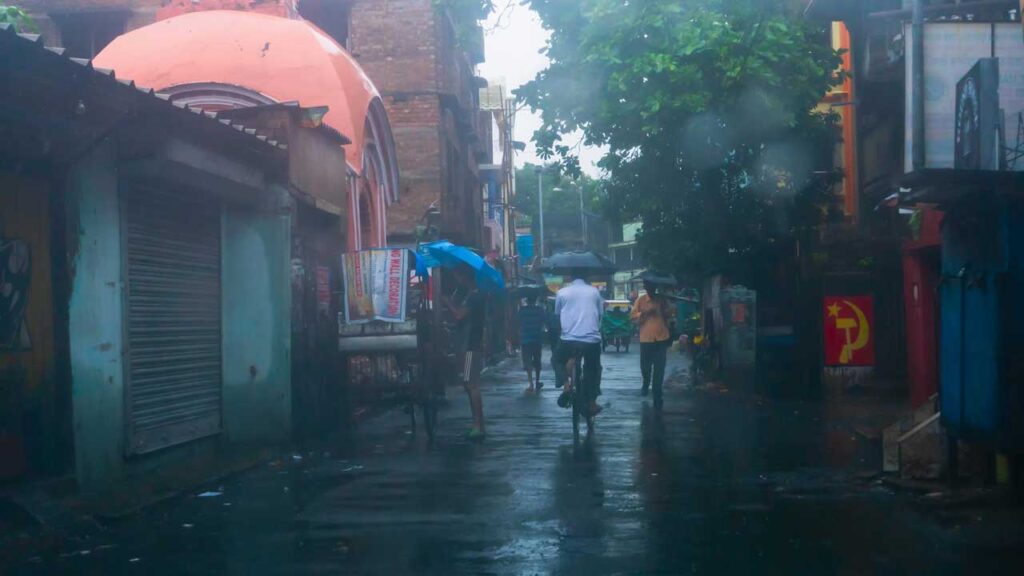
In conversation with Akshay Deoras: Withdrawal of the Indian summer monsoon
Monsoons are characterised by seasonal and abrupt changes in the direction of the prevailing winds of a region. This leads to a lot of rainfall and remarkable changes in the overall weather conditions.
The summer monsoon season in India happens every year between June and September. Between these months, India experiences heavy rainfall and a humid climate. The monsoon season is important as it provides water to over a billion people in India.
When the monsoon season ends, it is referred to as the ‘withdrawal’ of the monsoon. Whilst the onset of the monsoon progresses in a northwest direction from the Bay of Bengal toward eastern Pakistan, its withdrawal progresses in a southeast direction toward the Bay of Bengal. The timing of the onset and withdrawal of the monsoon can have a huge impact on the agriculture sector and water resources.
We spoke to Dr Akshay Deoras, a research scientist at the National Centre for Atmospheric Science and the University of Reading, about his study into the withdrawal of the Indian summer monsoon.
How does the monsoon affect weather in India?
The monsoon weather is characterised by a seasonal change in the direction of the strongest winds over South Asia. In particular, moisture-laden winds blow from the Indian Ocean toward the Indian subcontinent during June to September, bringing around 75% of the annual precipitation in India in just four months. Monsoon clouds and rain bring a welcome respite from the scorching temperatures during the summer that typically exceed 40 degree Celsius.”
Tell us about your research on monsoon withdrawal?
I’m part of a research team looking at the role of the midlatitudes in the direction of the onset and withdrawal of the summer monsoon in India. Midlatitudes lie roughly between the equator and poles.
“In particular, our focus in this study was on understanding how an intrusion of midlatitude dry air interacts with the Indian monsoon, leading to its withdrawal. To understand this, we used reconstructed datasets of the past weather (known as reanalysis datasets) and observations from satellites, rain gauges, and radiosondes.”
Why is this research important?
The Indian summer monsoon supplies over 75% of the country’s annual precipitation, profoundly impacting over a billion people. Variability in the timing of its onset and withdrawal has a direct impact on the agricultural sector and other users of water resources.
“Previous studies have shown that a wedge of mid-tropospheric dry air coming from the midlatitudes is present over India during the pre-monsoon, which gradually retreats toward the northwest (i.e., eastern Pakistan) as the onset progresses. The withdrawal of the monsoon is observed to progress in a southeast direction, from eastern Pakistan to the Bay of Bengal, during September-October, but there is a lack of a conceptual model. This is why our research is important.”
What did you find in the study?
“We found that the dry intrusion first appears over northwest India around mid-September and it is typically strongest at an altitude of around 15,000 feet above the ground. It creates an unfavourable environment for the occurrence of thunderstorms and rains, leading to the initiation of the monsoon withdrawal over northwest India. However, weather conditions elsewhere in India continue to support the occurrence of monsoon rainfall.
“As the withdrawal progresses, the wedge of dry air descends, as well as pushing further across the country. This suppresses monsoon rainfall activities, ultimately driving the withdrawal toward the southeast of India.
“By mid-October, the dry air engulfs most of India, causing the monsoon to withdraw from the entire country. Thus, the strengthening of the dry air intrusion from the midlatitudes can explain the withdrawal of the monsoon and its direction, in a reversal of the processes at work during progression of the monsoon onset.
“The results will help improve forecasting of the withdrawal of the monsoon. It also opens new avenues for further research.”
How does your work contribute to the wider scientific community?
The withdrawal of the monsoon has received less attention compared to the onset progression of the monsoon. This is the first of its kind study that explores the withdrawal, focusing on its direction.”
“The results of our work establish a new model for the withdrawal of the Indian summer monsoon in terms of midlatitude interactions, which could be tested for other monsoon regions.”
Are you collaborating with any other researchers or institutions?
My collaborators include Professor Andy Turner, at the National Centre for Atmospheric Science and the University of Reading, Dr Ambrogio Volonté, at the National Centre for Atmospheric Science and the University of Reading, and Dr Arathy Menon (Met Office, UK).
“Our research was funded by the Natural Environment Research Council and the Weather and Climate Science for Service Partnership (WCSSP) India project, which is a collaborative initiative between the Met Office, supported by the UK Department for Science, Innovation and Technology (DSIT), and the Indian Ministry of Earth Sciences.”
